MARIMO tea - Manufacture, Import & Wholesale
JAPAN: KADOTA'S KAMAIRICHA TEA GARDEN IN MIYAZAKI
The traditional Kamairicha tea garden of father and son Kadota is located in Miyazaki prefecture, on the southernmost of the Japanese main island. The friendship with the neighboring organic tea garden of Morimoto family already exists since many decades, and has an ongoing influence on the history of Kadota's manufacture of Kamairicha.

Photo: Junji Kadota and his son Sohn Yusuke Kadota in their Kamairicha tea garden in Miyazaki
Kadota's tea garden parcels are really small compared to others of today's tea gardens. The total area of Kadota's tea garden is around 2,6 hectare. As a comparation: Many of other family-owned tea gardens have a total area of 4 to 10 hectare, while bigger tea gardens even have areas of 100 hectare or more.
Many steps of Kadota's traditional Kamairicha-manufacture are done by hand. Because of this reason, the manufactre of more leaves harvested from a bigger tea garden area would just be impossible. Even with the really small area of their tea garden, Kadota have to work in fact day and night to process the freshly harvested leaves during the first-flush-season. While Junji Kadota works during daytime, his son Yusuke does the night shift, or the other way round. With the historic utensils for their Kamairicha manufacture, Kadota have to work like this several weeks, until all the first-flush leaves have been produced.
The leaves stem from several small tea garden parcels. Some of these parcels are located directly next to Kadota's little Kamairicha factory, while some others are located on a higher location some kilometers away. In Kadota's tea garden parcels, typical tea bush varietals for Kamairicha are found, like Yamanami and Zairai, but also common varietals like Yabukita.
Also father and son Kadota consider the kind of historic Kamairicha manufacture, like it takes place here, as a precisous treasure, because meanwhile it is unique in Japan. The cast iron utensils, which are in use for Kadota's Kamairi manufacture, are already more than 50 years old, while the original Kama are even 100 years old. The the production procedure is reduced to the essentials. There are no conveyor belts, which transport the tea leaves from one drum to the next drum during the drying process. All this is done by hand.
Both, father and son, use all their senses to adjust their Kamairicha manufacture every days in the right way. They touch the leaves to grope the structure of the leaves. They use their sense of smell to adjust the heat of the Kamairicha manufacture. They sense the humidity of the leaves, and the elasticity of the leaves. Then they adjust the timing, speed and temperature of their Kamairicha utensils again. As soon as the leaves have reached the right stage in one of the cast iron Kama, Kadota takes out the leaves and fills them in the next Kama. Father and son are absolutley concentrated during their work. They are one with the tea, which they produce.

Photo: Kadota Kamairicha is produced with 100 years old traditional Hon-Gama
The highlight of Kadota's Kamairi manufacture are 100 years old Hon-Gama ("realy Kama"), of which three pieces stem from Shigeru Morimoto's father Ryotaro Morimoto. Ryotaro Morimoto ended the manufacture of Kamairicha many decades ago, when he started with the production of steamed Tamaryokucha, which is one kind of Sencha ("steamed tea"), even when the leaves still had a curled shape like Kamairicha at this time. Ryotaro Morimoto did not need his Hon-Gama any more, because he started working with a steaming machine instead. At this point of time, Ryotaro Morimoto gave his Hon-Gama to his neighbor and friend, namely Junji Kadota's father. In the mid of the 20th century, the Hon-Gama were still fired with wood. Though, the smoke of the fire caused problems sometimes during the Kamairicha manufacture, as well as because it was not easy to get the right wood for firing them, Junji and Yuske Kadota stopped using wood for the Hon-Gama. Nowadays, they use a gas flame for heating all of thei old Kama. This is the only thing they changed in their factory.
Some sorts of Kamairicha from Junji und Yusuke Kadota in Miyazaki
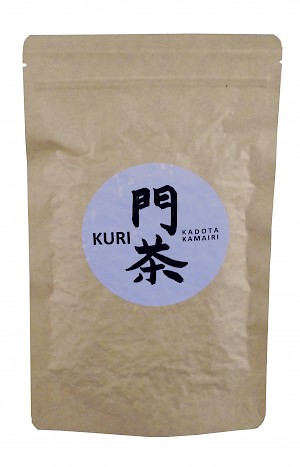 |
KURI - KADOTA KAMAIRICHA (organic)Kuri is the first tea from Kadota, which found its way to Europe. In harmony with the very traditional way of manufacturing, the main part of the leaves for the Kuri come from old tea bushes, which were grown from seeds (Zairai). Kuri is a tea that fascinates with its balance and mildness. The infusion is clear and lightly yellow. For a full experience of the aroma and taste of this tea, we recommend a different approach to infusion than in the case of steamed Japanese green teas. An infusion temperature of approx. 80 degrees, a steeping time of less than 1 minute and the use of rather few leaves are recommended. |
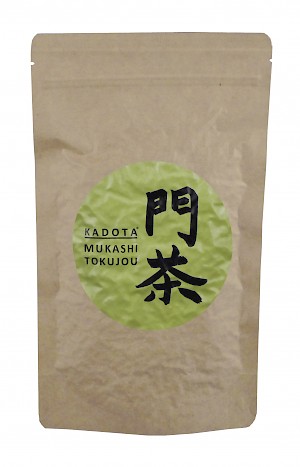 |
KADOTA MUKASHI TOKUJOU (organic) For the Kadota Mukashi Tokujou only the leaves of old tea bushes grown from seeds (Zairai) are used. This reflects the traditional way of production of Kamairicha. Thanks to the early harvest time in the year (1st harvest), this fine tea is able to inspire with its fresh and subtle sweetness, its balance and its mildness. The infusion is clear and light-yellow. For a full experience of the aroma and taste of this tea, we recommend a different approach to infusion than in the case of steamed Japanese green teas. An infusion temperature of approx. 80 degrees, a steeping time of less than 1 minute and the use of rather few leaves are recommended. |
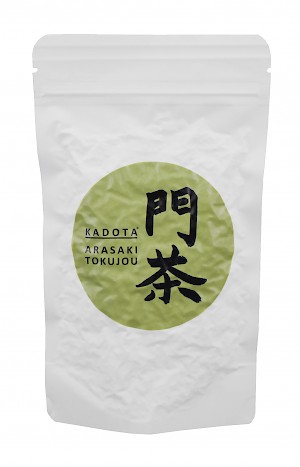 |
KADOTA ARASAKI TOKUJOU (organic) A flowery and fragrant Tokujou with a clear infusion, fine sweetness and a long-lasting finish. For this unique tea Junji and Yusuke Kadota use the Yama-Yabukita from the hillside Arasaki. The final heating for this Tokujou is applied in an exceptionally subtle way. It is just strong enough to make this tea storable. The taste of the Kadota Aracha Shincha (see below) is preserved. For a full experience of the aroma and taste of this tea, we recommend a different approach to infusion than in the case of steamed Japanese green teas. An infusion temperature of approx. 80 degrees, a steeping time of less than 1 minute and the use of rather few leaves are recommended. |
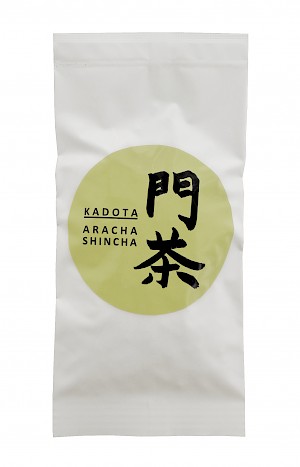 |
ARACHA SHINCHA FROM KADOTA (organic)As the name already indicates, this is a kind of tea, which was not finally heated. This means, the final heating step "hi-ire" has not taken place. The result is, that this Aracha Shincha from Kadota comes with a lot of freshness, like it should be expected from a real Shincha. Though, what is really adorable, is the fresh and flowery fragrance, which comes out from the leaves, when they are infused. This kind of fragrance reminds a bit of a very light, green Oolong. This association is quite traceable, because Kadota lets the freshly harvested leaves wait a while, until they are heated. Most important for this step is, that the kind of withering has to be stopped at the right time, as long as the leaves are still green. This means, no fermentation can be detected with the eyes. This is a really fascinating tea, of which only some kg are available each year. An infusion temperature of approx. 80 degrees, a steeping time of less than 1 minute and the use of rather few leaves are recommended. |
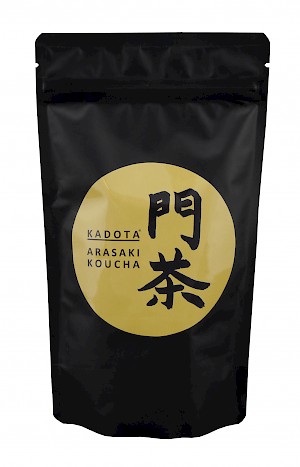 |
KADOTA ARASAKI KOUCHA (organic) For the Kadota Arasaki Koucha only the leaves from the Yama-Yabukita bushes from the hillside Arasaki are used. Because of the harvest time in the year (2nd harvest) the Yama-Yabukita bushes have bathed in a wealth of sunrays. The fresh leaves express this in the form of catechins. These catechins are the basis for the fruity-fragrant aroma of this black tea, which is produced through fermentation of the catechins. For a full experience of the aroma and taste of this tea, we recommend a different approach to infusion than in the case of steamed Japanese green teas. An infusion temperature of approx. 90 degrees, a steeping time of less than 1 minute and the use of rather few leaves is recommended. |
Sorts of Kamairicha from other Kamairicha tea gardens in Miyazaki
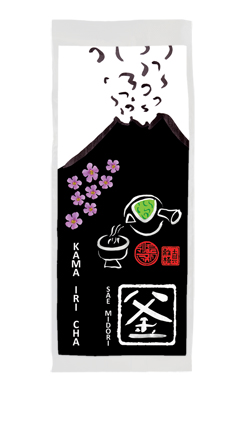 |
SAE MIDORI KAMA IRI CHA (organic)This Kamairicha is made by only useding the pure tea leaves of tea bush varietal Sae Midori from first flush. Sae Midori has intensively bright green leaves and is famous for its seetness and mildness. It is of of the tea bush varietals, which is therefore oftenly used for the manufacture of Gyokuro |
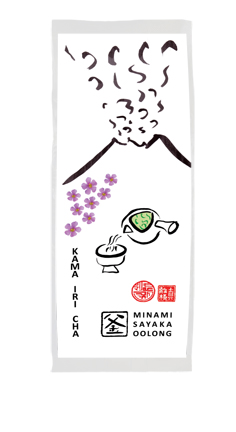 |
MINAMI SAYAKA OOLONG KAMAIRI CHA (organic)The very light fermentation of the leaves from tea bush varietal Minami Sayaka creates of very fresh and flowery tea, which reminds of a green kind of Oolong. |
